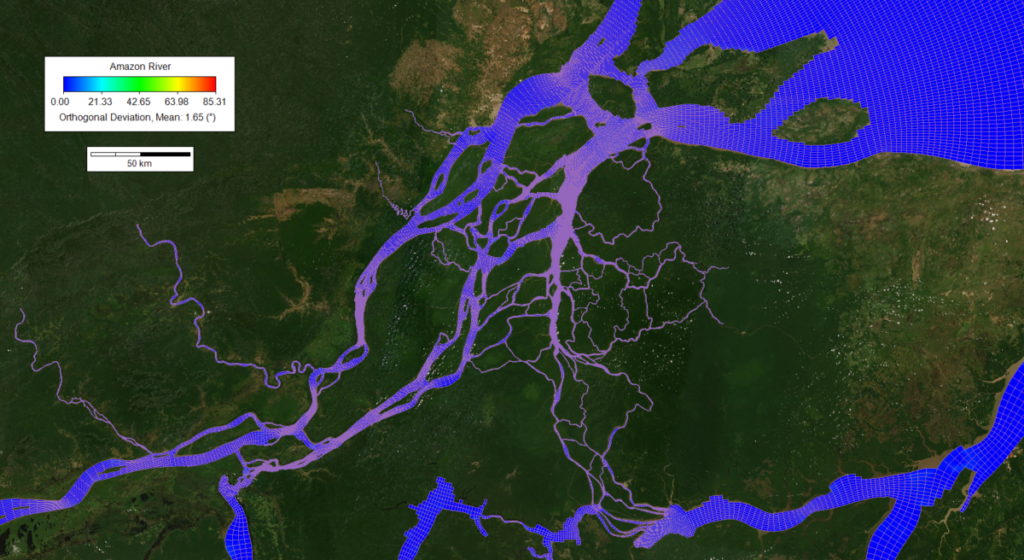Grid Editing
For hydrodynamic modelers, Grid+ provides many time-saving features that support an iterative grid building process. After building or loading an existing EFDC grid or third-party model grid into Grid+, a wide range of grid-editing tools are offered to allow you to refine, smooth, telescope, and fit the boundary of the model domain. You can then save your grid and load it directly into EE or export it to another modeling tool to build the final model.
Maintain I, J Map
One important feature of Grid+ is the ability to import an existing EFDC+ model grid, make small changes to the grid, and then write the entire model back out. This feature is available if your changes do not alter the model’s maximum I or maximum J (referred to as IC and JC variables in EFDC+). This allows you to improve orthogonalization quickly and iteratively or the fit to the land boundary, without having to generate a new model each time edits are made.
Import Grid
Grid+ imports 2D curvilinear orthogonal grids from a range of other models and formats. Once imported, you can display various attributes of the model, such as orthogonal deviation, cell size, and coordinates.
Edit Grids
You can have complete control over the model grid with a wide range of tools for adding, deleting, and deactivating cells, moving grid nodes, grid coarsening, refinement, regularizing, telescoping, fitting to boundaries, and more.
Export Grids
Grid+ allows you to export a grid to be run directly by EFDC+ or load it into EFDC_Explorer (EE) and further configure it from there. You may also export the grid to many recognized grid formats for use in other modeling tools.

